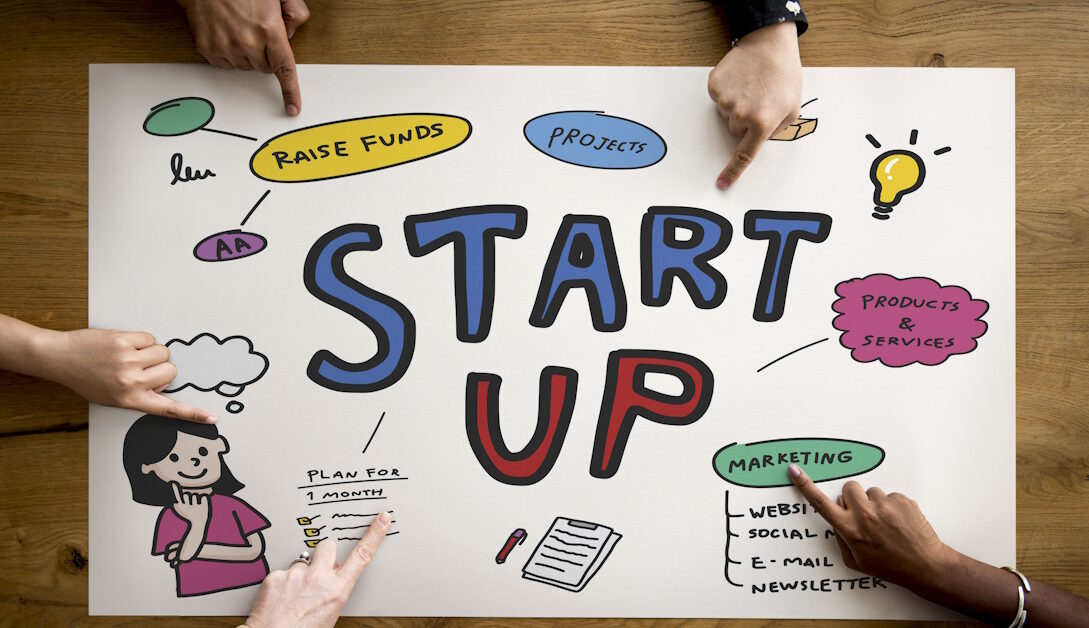Welcome back to the blog! It’s been a while, but I’m ready to dive back in and share some of the lessons I’ve learned from years of building and marketing software products—so you don’t have to go through the same growing pains. I’ve built this series for early stage software companies or products that want to use Product-led growth. Yes, there’s homework for you to do, because just reading good ideas is really a waste of your time.
See, after 15 years of software and product engineering, I hung up my semi-colon spurs and learned product marketing, mostly for early stage products. This gives me a unique perspective because in many ways, I make sense to technical people and early stage leaders.
On Early Stage Products
The journey from software development to product marketing taught me that what works best for early-stage products often doesn’t work for mature ones. If you’re the product owner, a founder, or a marketer of an early-stage SaaS, you know it can be overwhelming to figure out which advice applies to your unique situation. My goal isn’t to tell you what to do, but rather to offer frameworks for thinking about your growth challenges and share stories of my own missteps so you can avoid some of the most common mistakes.
Why Product-Led Growth Might Be For You
In this series, we’re exploring the concept of Product-Led Growth (PLG) and its value for early-stage software startups. Why PLG? Because it aligns perfectly with where you are right now: no sales team, limited resources, and a desire to build a product that practically sells itself. Product-Led Growth is about making your product the main vehicle for acquiring, activating, and retaining users—perfect for startups focused on efficiency. It’s not always the right choice for all companies and products, but if you could hire a sales staff, you wouldn’t be reading this series, would you?
In the Wise Words of Patrick Henry, Give Me Metrics or Give Me Death
Our very first step is to frame our thinking in a metrics framework. To guide this exploration, we’ll be using the pirate metrics framework—Acquisition, Activation, Revenue, Retention, and Referral (AARRR). Each metric is a key part of your product’s growth. Sure, I could invent my own fancy framework, write a book, and make millions, but let’s be real—pirate metrics are simple, effective, and already work great. So why reinvent the wheel when we can just use it to steer towards growth? We make money shipping, not agonizing over minutiae.
I’ll ask you to frame your thinking and decisions according to how it will affect one or more of these categories. Then you’ll need to ask yourself, is this the most important step right now, or am I not focused right? For example, there’s little point working on retention based activities if you don’t yet have customers.
The Pirate Metrics Framework—Acquisition, Activation, Revenue, Retention, and Referral (AARRR)
The AARRR framework by Dave McClure—aka the Pirate Metrics (because who doesn’t love pirates?)—is a simple and powerful way to track key stages in a customer’s journey. Whether you’re running a startup or scaling a SaaS business, these five stages will help you steer your ship to treasure (a.k.a. paying, loyal customers):
Acquisition:
This is how people find you. Whether it’s through Google, ads, or your cousin’s endless tweets, acquisition tracks all the ways you pull potential customers in. The key question: How do you get people to your site? Pro tip: cat memes are surprisingly effective.
Activation:
Congrats, people have arrived! Now, can they figure out your product without pulling their hair out? Activation is when users get that first “aha!” moment—like signing up or using a feature that makes them think, “Hey, this is actually useful!” Ask yourself: Are users getting value from your product right away, or are they ghosting?
Revenue:
This is where the magic happens—users start giving you their hard-earned cash! Whether you’re selling subscriptions, one-time purchases, or in-app extras, this metric tracks when people actually pay. Question: How do you turn happy users into paying customers? (Hint: Offering value beats begging for change.)
Retention:
So they’ve paid once—great. But are they sticking around, or leaving faster than a Tinder date gone wrong? Retention is all about keeping users engaged and coming back for more. Key question: How do you keep users from bailing? If you’re doing it right, your customers should feel like they’re in a long-term relationship—not just a one-night stand.
Referral:
Your users are happy, they’re engaged, and now, it’s time to get them to spread the word like your favorite grandma bragging about you to her friends. Referrals happen when satisfied customers tell others about your product. Ask yourself: How do I get customers to be my cheerleaders? (Spoiler: Offering referral bonuses works way better than guilt trips.)In the next post, we’ll set the foundation for why these metrics are so important and how they align with PLG to help you make better decisions, track meaningful progress, and ultimately grow your startup sustainably.
Your Homework
Copy these questions and answer as many as you can. If you just aren’t there yet with some of the questions, that’s ok!
Acquisition
Where are our users coming from?
- Which channels—organic, paid, referrals, etc.—are bringing in traffic?
- Are they working as expected?
Which acquisition channels are delivering the most engaged users?
- Are certain channels bringing users who stay and interact more? or is it just a flood of unengaged visitors?
- What facets are you measuring for engagement?
How much are we spending on customer acquisition, and what is the ROI for each channel?
- Are we getting good returns for the money we’re putting into ads, partnerships, etc?
- Do we know enough to know our CAC (Customer Acquisition Cost)? If not, what is the missing piece (tracking, analysis, experience, time?)
Are our marketing efforts attracting the right target audience?
- Do the users signing up match our ideal customer profile?
- How do we know?
What channel do we wish worked better? Should we drop it for now, or respin it?
- It does no good to fall in love with ideas. If they don’t produce now, and you don’t see an easy way to make it produce acceptably, dump it. Success often comes from focus. Think about this and write something here.
Activation:
What percentage of users experience their first ‘aha’ moment, and how quickly?
- Is there a specific feature or action that leads users to realize the value of your product?
- How soon do they experience it?
Where are users dropping off during onboarding?
- Which confusing steps or friction points are in the sign-up and activation process that cause users to abandon the product?
- Can you do something to build excitement earlier?
What steps can we take to make activation smoother and faster?
- Can we simplify or shorten the onboarding process?
- What guidance could we offer to users during their first interaction to increase activation?
Do users feel immediate value after signing up?
- Is the product’s value clear enough right away, or does it take too long for users to ‘get it’? If they don’t feel value fast, they’ll leave fast.
If you could rebuild your onboarding process based on what you know now, how would it be different?
- Sometimes we need to begin with first principles and get out of our current thinking to see the right path forward.
Revenue:
What’s our conversion rate from free trials or freemium users to paid customers?
- Is there a significant drop-off between trial users and those who upgrade?
- Why do you think that is?
Are customers seeing enough value to justify paying for our product?
- Do we offer enough value through features, service, or outcomes to make them feel paying for the product is worth it?
- How did you verify this? If you felt the answer was self-evident, or tribal knowledge, think deeper about this. Most founders are blindly in-love with their product and they should be. However, you aren’t your own buyer.
Is our pricing model aligned with the perceived value of our product?
- Are we charging too much or too little based on what customers expect or the results we provide? If some customers complain your price is too high, your price is probably fine. If none complains, it’s too low.)
What are the key objections preventing users from converting to paid plans?
- Price?
- Lack of features?
- Competition?
- Something else that is holding potential customers back?
- How did you validate this?
Retention:
How long are users staying before they churn?
- Are users leaving right after the first few uses, or do they churn after weeks or months?
- When is the most critical drop-off point?)
Why are customers leaving?
- Do you gather exit feedback to understand whether they’re leaving due to product limitations, customer service, pricing, or better competitors? While this can be uncomfortable, you will always learn something new.
How often are existing users engaging with our product?
- Are there clear usage patterns, or are users becoming inactive over time?
- If time and resources were infinite, what would you do to improve user engagement?
What steps are we taking to proactively retain users?
- Do you have re-engagement campaigns, support outreach, or new features to keep customers coming back?
Referrals:
How do users recommend us to others?
- Is there a built-in reason they should do this, like a network effect?
- How do you track this?
- Word of Mouth may be your best source, but it isn’t trackable so find something else to add.
Are our users happy enough to recommend us to others?
- Do we know our Net Promoter Score (NPS)?
- Do you collect enough feedback to gauge customer satisfaction and willingness to refer to you?
What percentage of new customers are coming from referrals?
- Is word-of-mouth driving growth, or are you completely reliant on paid acquisition?
How easy is it for users to refer others to our product?
- Do you have a referral program or tools in place to make sharing effortless or are you relying on passive referrals?
- It’s ok to ask for referrals. Don’t you like talking about things you like?
What incentives or programs do we have to encourage referrals?
- Often the program isn’t designed to convince someone to refer you to another company, rather, it’s to prompt those who would already be willing to do so, to do it right now.
What’s Next in the Series
There is a certain amount of technology you need in place to make this happen. In the next article, I’ll discuss a free stack you can use for web based applications to understand some of these areas better. From time to time, we’ll consult some of these tools to work through parts of the series. Let me know if this sparked any ideas for you.
Next Part: Building a Strong Digital Marketing Foundation


